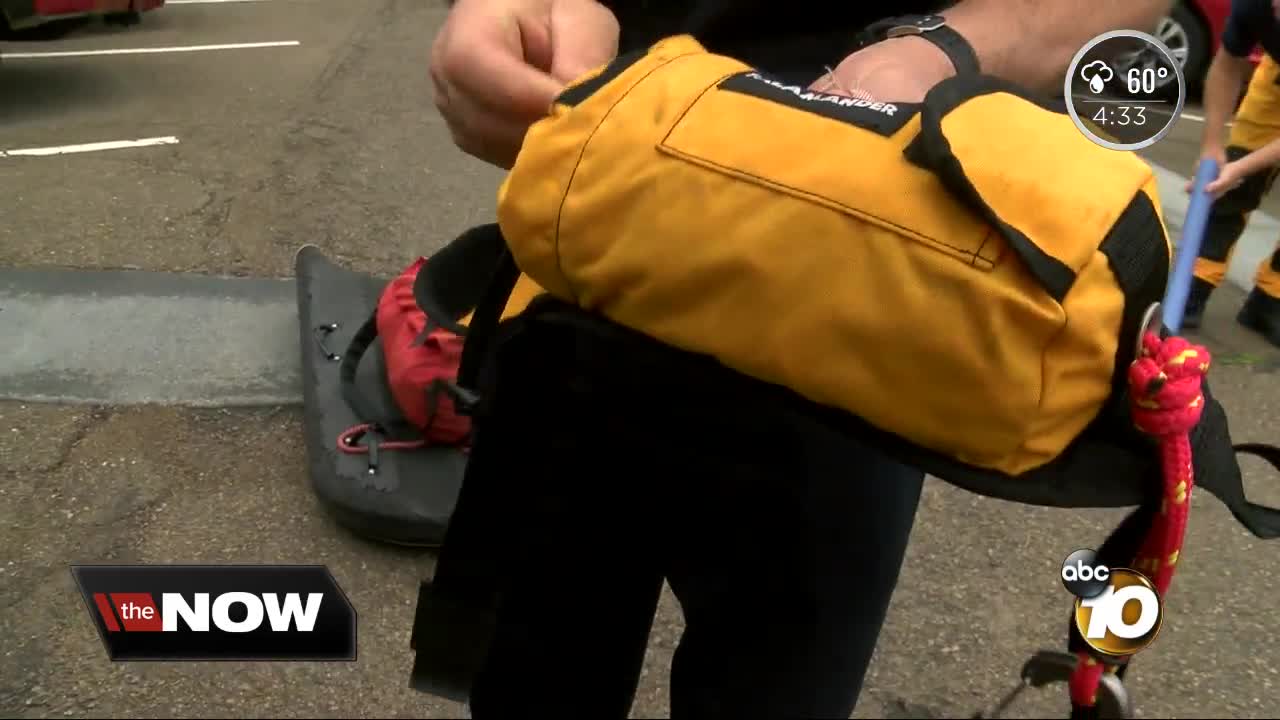SAN DIEGO (KGTV) - The San Diego Fire-Rescue Swift Water Team showed 10News the tools they use to protect anyone trapped in a flood.
You may see their red trucks with the large yellow raft tethered to the top if you're in areas like Mission Valley, or Imperial Beach when it rains significantly. They have nine trucks called "rovers" that patrol hot spots that often flood whenever it rains.
Marine Safety Captain John Sandmeyer picked through the equipment piled in the back of the truck. "It's very hard to predict [weather] for one thing and we want to be at the right spot at the right time," Sandmeyer said.
Some of the tools they use include a River Board, which looks like a giant boogie board, pulleys, rope and carabiners to anchor themselves or tie to someone who needs to be rescued.
Sandmeyer described that yellow raft on the roof as "very useful in getting people on the boat and pulling them out, say if they're on an island or stuck in a vehicle."
He then grabbed a small yellow bag the size of a water bottle, "this is a throw bag," he said pulling out red rope. "So if somebody were to be moving in the water or we just needed another point of attachment, boom! I can just toss this right across, Jason grab onto that," he said throwing the rope to Lifeguard Jason Cull.
The teams also have night vision goggles that detect heat, "we can pick off people who may be stuck in the brush area," Sandmeyer said.
Another piece of tech packed away inside a large black tote was water test kits, "send a sample to the lab if necessary, and see what kind of water is out there, if somebody gets stuck in the water," Sandmeyer said.
San Diego Lifeguards even invented a life-saving device you might recognize from your swimming pool. It's a circle of rope, on one side is yellow rope, on the other are three blue noodles. "As soon as your inside that safety ring, we allow one of the sides to release, and then that victim would swing right back to the bank," Sandmeyer said describing the rescue procedure. The device is now used in several agencies, according to Sandmeyer.
"To have these units strategically placed in the city and throughout the county, working with other agencies doing the same thing, that's how we got San Diego covered," he said.
The team trains every year in Oregon on the Deschutes River. In 2018 they had the least amount of swiftwater/flood rescues in 15 years, totaling only six. In 2017, Sandmeyer said they had more than 40 rescues and a hotel evacuation, where 65 people were rescued.



